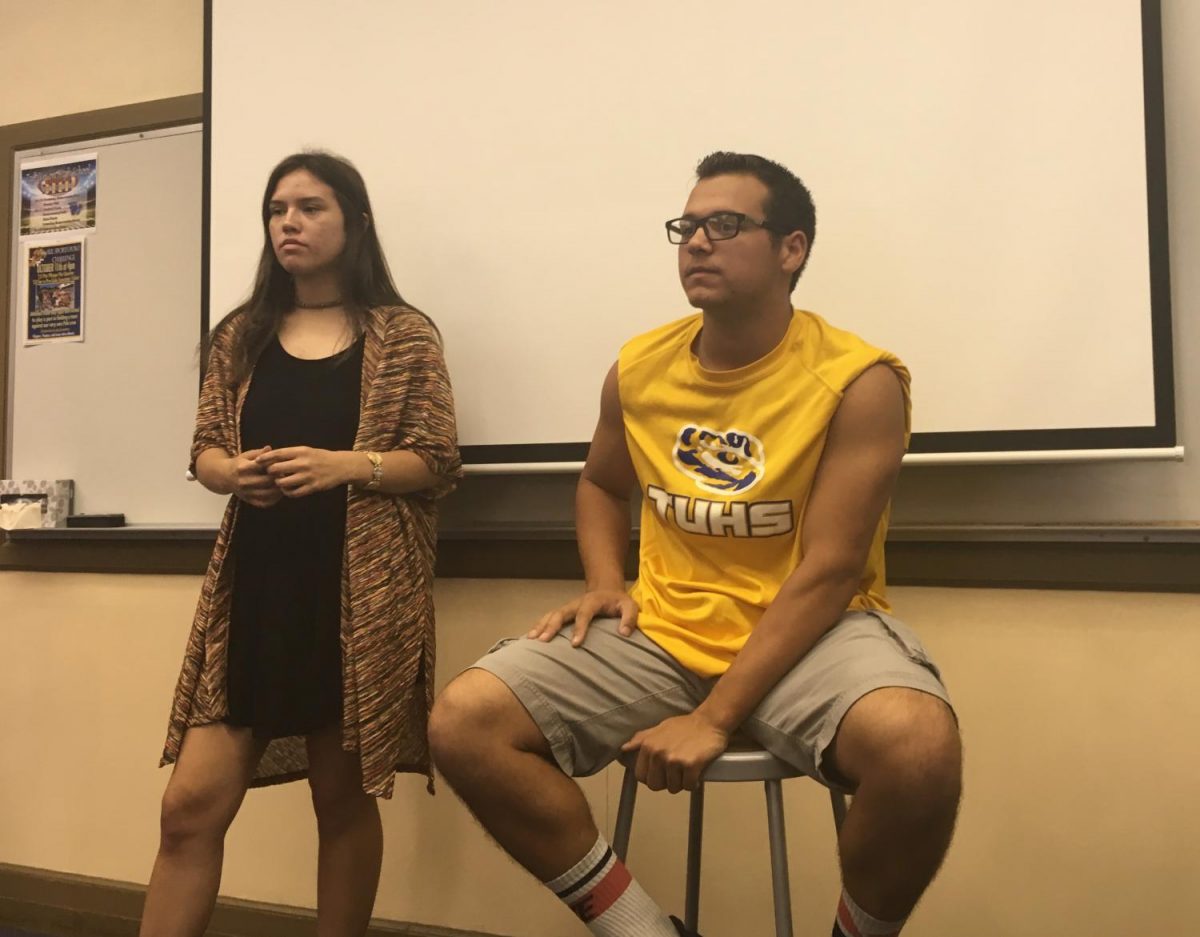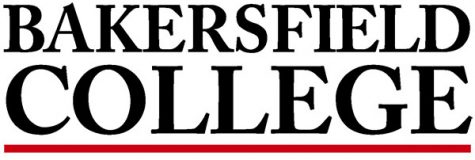Girls Under Duress
Jacob Gonzales and Sarah Lopez addressing students at the meeting
On September 12, 2017, a meeting was called by ASB President Jacob Gonzales and Secretary Sarah Lopez. These members of the student council met with students to discuss the contention with the dress code. The dress code at TUHS has been a widely discussed, controversial topic among students on campus, from its rules to how it is enforced. Many female students have felt specifically targeted and humiliated by the dress code. With comfort being a factor during the heat that we experienced, and the girls’ limited ability to express themselves through what they wear, this issue has become a topic of discussion around campus. Other than the rules of the dress code, consistent enforcement is also an issue for some students. According to Mrs.Toro, “The dress code has been established for a purpose. I see that it’s an easy fix and shouldn’t even be an issue; we work through situations that are related to the dress code pretty well. Honestly, we try to make it a non-issue.”
Whenever a student is “dress coded”, they are instructed to wear attendance clothes. Students reportedly feel subjected to criticism and judgement from fellow classmates when they have violated the dress code. Students know when someone is “dress coded” by the school attendance clothes, and criticize the students who have to wear them. Problems within the classrooms arise whenever the student wearing attendance clothes becomes more of a distraction than when the student is in their regular apparel. Within the Taft Union HSD – Administrative Regulation – Dress and Grooming, states “Any apparel which draws undue attention to the wearer tends to distract from the educational process and is therefore inappropriate.” Mr. Greer was asked how students coming into class who have been “dress coded” has become a distraction to his class, he responded “What it does is, a student will walk in with attendance clothes on and instantly other students will asking what they got dress coded for, and this is actually more of a distraction than if a student walked in showing their shoulder or anything else…basically, when you point something out and say that it’s wrong, it draws everybody’s attention to it when if you just ignored it in the first place it wouldn’t be an issue.”
The regulation within the dress code that affects most female students is the fourth bulletin listed on the dress code document that states: “Clothes shall conceal undergarments at all times…Tops must have two shoulder straps of at least 1 ½ inches wide.” Another reason behind the contention is that girls are not always able to conceal their upper body undergarments behind 1 ½ inch tank tops on hot days at school. The restrictions of the dress code limit the self-expression of the female students, creating a feeling of insecurity resulting in being labeled a distraction to the educational process of the male students.
Gonzales and Lopez are leading the way to work toward a resolution to this looming problem. With high hopes that the issue can be solved in a civil manner without the need of a protest, Jacob stated, “Honestly I don’t want to get there but, if it comes to that, then we are prepared to do whatever it takes.” With Sarah adding, “This isn’t meant to anger anyone for making this a ‘thing’, but it is uncomfortable, so we are hoping we don’t have to protest but, if we do, we will do it in a respectful manner.” Toro was also asked how the dress code reflects on student behavior, and she replied saying, “In terms of discipline, it’s not something we suspend for or take it to that next level, but it becomes something where, after several times, it becomes a bit of defiance and so again what we try to do is work with everyone early and positively so that if there was a situation where we need to address the dress code, more than a couple of times, we can work through it.”
Sarah and Jacob want to be as respectful, professional, and well-mannered without blowing everything out of proportion as they approach the board on the matter. Toro was asked what changes to the dress code could be made to please both sides to which she replied, “A couple of years ago before I came, there was a committee that addressed the dress code and they made it a little more lenient, but there were some things that were just non-negotiable, but effort was put forward to make a board policy and to have committees address the dress code, but I do know and appreciate the modesty, the effort, and conscious effort that is being put forward by our students.”
For such a change to occur, support is needed, and many of those who came to Jacob and Sarah with their complaints did not attend the meeting that was held, Jacob commented, saying, “what bothered me was there are a lot of people that say they want all this dress code change, but they don’t actually want to do anything about it, with many flaking and not showing up to the meeting and I don’t understand why.” Soon after, Sarah said, “It was the same thing, we had that discussion before we held the meeting saying that you know we sent out the message to many people but with the probability of many people not showing up, it was rough and, nothing personal, but it’s the fact. If you want a change, you go out and make it.” With both sides unable to agree upon the matter, a solution to this issue may not be near. With enough support, however, Jacob and Sarah may be able to solve this long-time problem that the board and students have had to deal with.





